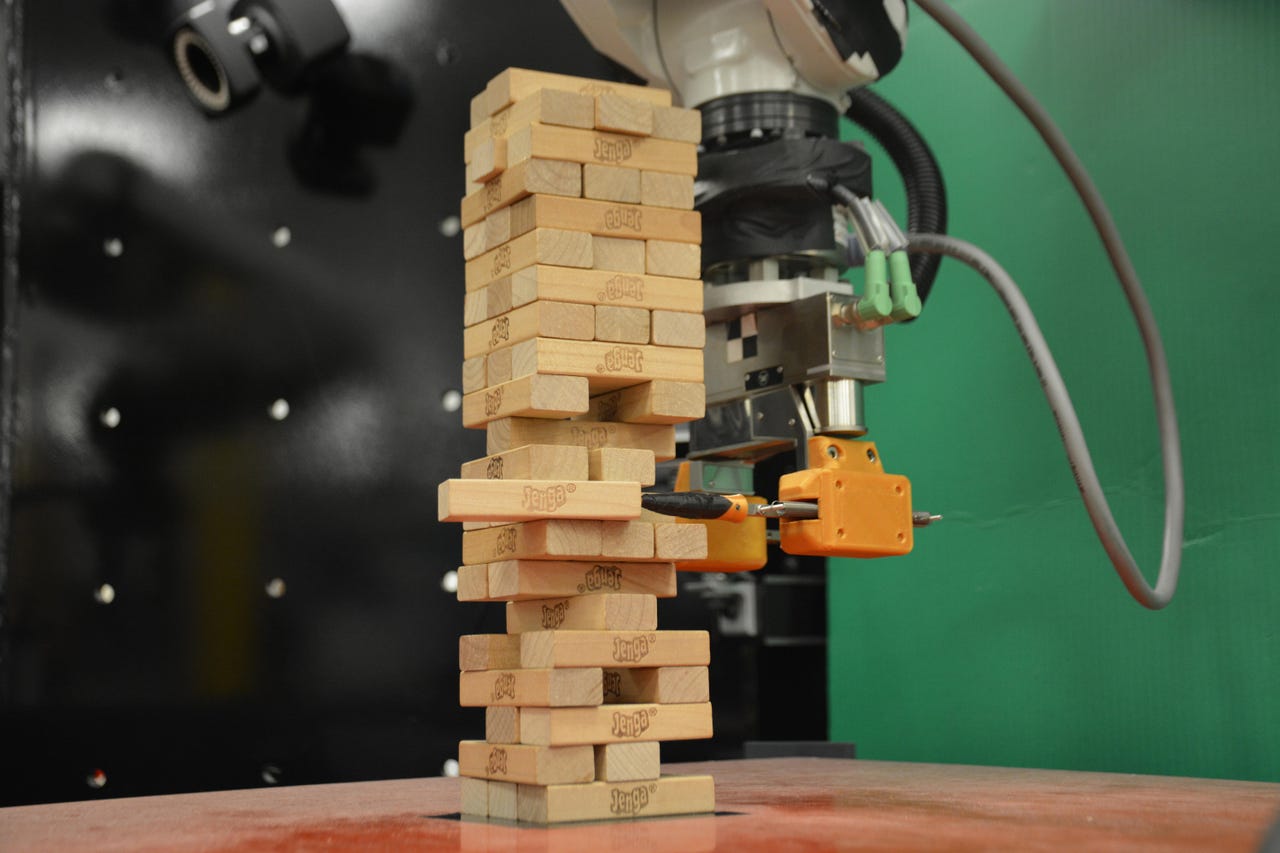What Jenga can teach robots about industrial automation


(Image: courtesy of the researchers.)
Robotics
A team of MIT engineers developed a system that robots can use to play Jenga. This classic game is pretty simple -- players must remove individual blocks from a stacked tower without knocking the tower over. Even though the rules are simple, Jenga requires a unique combination of physical skill and mental strategy. By mastering the game, the robot overcomes many of the challenges in manipulation that it would encounter in an industrial setting.
Also: Sophia the robot walks for the first time CNET
This skillset, a combination of approach and agility, could translate nicely in the real world, where robots are used to manufacture and assemble things like electronic products.
The MIT engineers customized an ABB IRB 120 robotic arm, outfitting it with a soft-pronged gripper, a force-sensing wrist cuff, and an external camera. Just like when humans play Jenga, the robot pushes against a block to determine if it can be removed without toppling the tower. While we just our senses of touch and sight, the robot used its camera for vision and the wrist cuff for tactile feedback.
Also: Robotics adoption: The SMB guide to industrial automation
The researchers published their findings in the latest issue of Science Robotics. The paper's lead author Nima Fazeli tells ZDNet, "The robot has to deal with real-world noisy sensors and partial information. Critically, the robot cannot know the state of the tower (how blocks move) without physically interacting with it. For this, it needs to combine its two complementary senses of sight and touch, much like we do."
With more experience, the robot learned how to get better at playing Jenga (in other words, how to get better at manipulating precarious objects). But reassembling a Jenga tower is time-consuming and difficult, Fazeli says, so the engineers developed algorithms and approaches that only require small amounts of data. Instead of collecting large data-sets, which would require rebuilding the tower tens of thousands of times, the robot trained on 300 or so attempts. This efficient approach involved clustering together similar behaviors and outcomes. Then the robot developed a model for each data cluster so predict how a block would behave, depending on how it looked and felt.'
Also: Meet Loomo, Segway's personal mobile robot TechRepublic
The goal of the project isn't to create a Jenga master, but to improve the way artificial intelligence interacts with the physical world. "Taking this to an application, we look toward industrial automation," Fazeli explains. Specifically, this technique could be useful for assembly and disassembly, where robots need to figure out how to put parts together.
Fazeli says, "We believe that the ability to create useful abstractions, much like this robot does for the interactions between Jenga pieces, and the ability to reason about physics in the domain of sight and touch are an important step towards robots effectively and quickly learning useful manipulation skills that they can deploy in industrial setting. "
Previous and related coverage:
Robotics in business: Everything humans need to know
An executive guide to the technology and market drivers behind the $135 billion roboticsmarket.
Living Machines: A quick history of robots (Part I)
Derided as abominations or celebrated as ingenious feats of human engineering, robots have been around longer than you think.
Wanted: Robot life coach (no, really)
The unique job is a hint of what's to come as robots increasingly join us in the human world
Gorgeous robots made of high tech paper are mesmerizing
Fifty students were given this shapeshifting paper and told to let their imaginations run wild. Here's what they came up with.